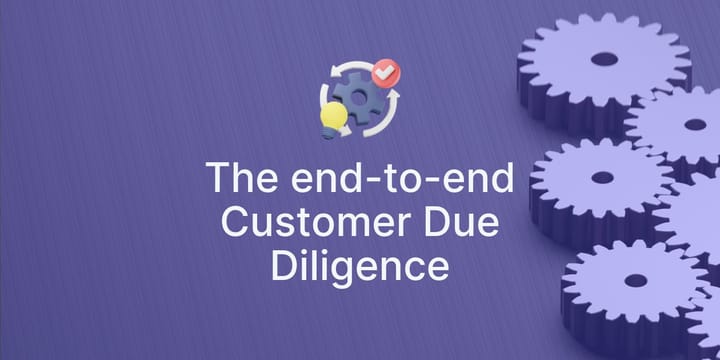How to Get Your Organization on Board with Implementing LegalTech Solutions

On the journey of evaluating and implementing a new LegalTech solution, we often need to justify the investment budget to the management and other stakeholders. This challenge has become a familiar hurdle for many General Counsels and Heads of Legal: making a compelling case for the adoption of LegalTech.
Let's explore strategies for smoothing out any friction, convincing other interested departments, making a case for the chosen tool, justifying the investment to management.
1. Start by identifying the need through discussions.
Share the need you've identified and the issues you aim to address with leaders from other departments, but hold off on discussing the solution just yet. It's crucial first to establish a sense of necessity.
It's likely that some of these challenges are also faced by teams in sales, operations, or human resources, who could benefit from the software as well.
Additionally, gathering both internal and external feedback on current challenges and the tool's potential impact, you can significantly strengthen your case, demonstrating that the software is a viable solution.
This process might take several weeks until the problem/challenge becomes apparent. Moreover, it will allow you to collect feedback from other teams through conversations, whether formal or informal, as you prefer.
2. Now, it's time to craft your presentation.
After clearly identifying the need and gathering supportive testimonials, you’re ready to put together a compelling presentation focused on the problem.
First part of the presentation - A Snapshot of the Current State:
- Outline the issues faced by your legal team, one by one.
- Do the same for problems identified by other interested teams. There are always direct or indirect connections.
- Consider the long-term impact. How will these issues affect us in one year? Or in three? For instance: we might lose a competitive edge, face a higher risk of potential sanctions, or encounter difficulties in scaling our team…
- Feel free to reveal anonymous testimonials or specific metrics to support your points.
Second part of the presentation - Introducing Solutions and Benefits:
- Discuss the solutions you've explored for the aforementioned problems.
- Highlight the metrics that will improve as a result.
- Share success stories from other companies, especially those in your sector if possible. Ideally, you should have already spoken to them to understand firsthand the benefits they've experienced.
- Even if you have a winning solution in mind, refrain from mentioning it just yet, as the focus should remain on solving the problem.
Third part of the presentation - Showcasing Specific Tools:
- Briefly introduce the tools you've evaluated that are designed to tackle the issues at hand. Discuss the reasons that led you to favor one tool over another.
- Talk about the scalability of the tool. Show how it can adapt to the growth and evolving needs of the organization.
- Also, highlight the secondary benefits the tool offers. As always, think about advantages at the organizational level, not just for your legal team.
Fourth part of the presentation - Discussing the Investment and Open Dialogue:
- When talking about the budget, avoid terms like “cost” or “price”—refer to it as an “investment.”
- Now's the time to address any questions and perhaps revisit earlier parts of the presentation for clarification. Note down any questions you can't answer immediately to follow up with the provider.
- Be prepared with a broad, not overly detailed, implementation plan in case the response is positive and there are questions about this aspect. The tool's provider should be able to hold you with this presentation or outline.
- Aim to leave the presentation with something tangible: a follow-up meeting to see a product demo, a pilot test, or a set date to further discuss the matter.
- Talk about the scalability of the tool. Show how it can adapt to the growth and evolving needs of the organization.
- Also, highlight the secondary benefits the tool offers. As always, think about advantages at the organizational level, not just for your legal team.
3. The Importance of the Tool Demo
During the evaluation process, it makes sense that you might have already conducted an initial general demo with the tool's provider, or perhaps you've explored the tool on your own. The management and key stakeholders will likely want to see a demonstration (demo) of the tool. What should this demo look like?
- First, you should prepare a checklist of specific features you're looking for in the tool to conduct a thorough evaluation of the solution during the demo.
- The demo should accurately replicate the use case for which you're considering the tool. In other words, it should be as customized as possible.
- It should reflect the experience of the various primary users.
- Discuss security features, integration capabilities, and the type of support you'd receive if you decide to go ahead with the tool.
- It would be nice to revisit some success stories from your sector. Even if you're already familiar with them, you might discover new insights.
5. Plan the Negotiation
You've managed to convince the management, but you might still need to iron out some details related to the pricing of the legal tool. This step shouldn't be left to chance, and even if you're not a seasoned negotiator, you can design a plan considering some of these proposals:
- The most important advice if the budget is tight and you're unclear about the benefits the tool could bring: request a pilot project.
- Research market prices: Understand what other providers charge for similar services and leverage this knowledge to negotiate a lower price.
- Show long-term commitment: If you're willing to commit to a long-term contract, you'll likely have more negotiating power to lower the price.
- Seek flexible payment options: Consider tiered pricing models or discounts for the initial months of usage, installment payments, or pre-payment (evaluate what suits you best), discounts for bringing in a subsidiary account or partner...
- Use the "first move" technique: Be the first to make an offer to establish an anchor point. Ensure your first move is based on reasonable market research and your desired profit margin. Define a negotiation range around the anchor and move within that range.
- Determine your "walk-away point," which will be the minimum acceptable to you.
- Discuss with your stakeholders external financing options, such as grants, or strategic partnerships that can support the project's implementation.
- Extra*: Don't be afraid to walk away from the offer if it doesn't meet your needs. There are always alternatives, and it might be the leverage you need for the provider to offer more favorable terms.


